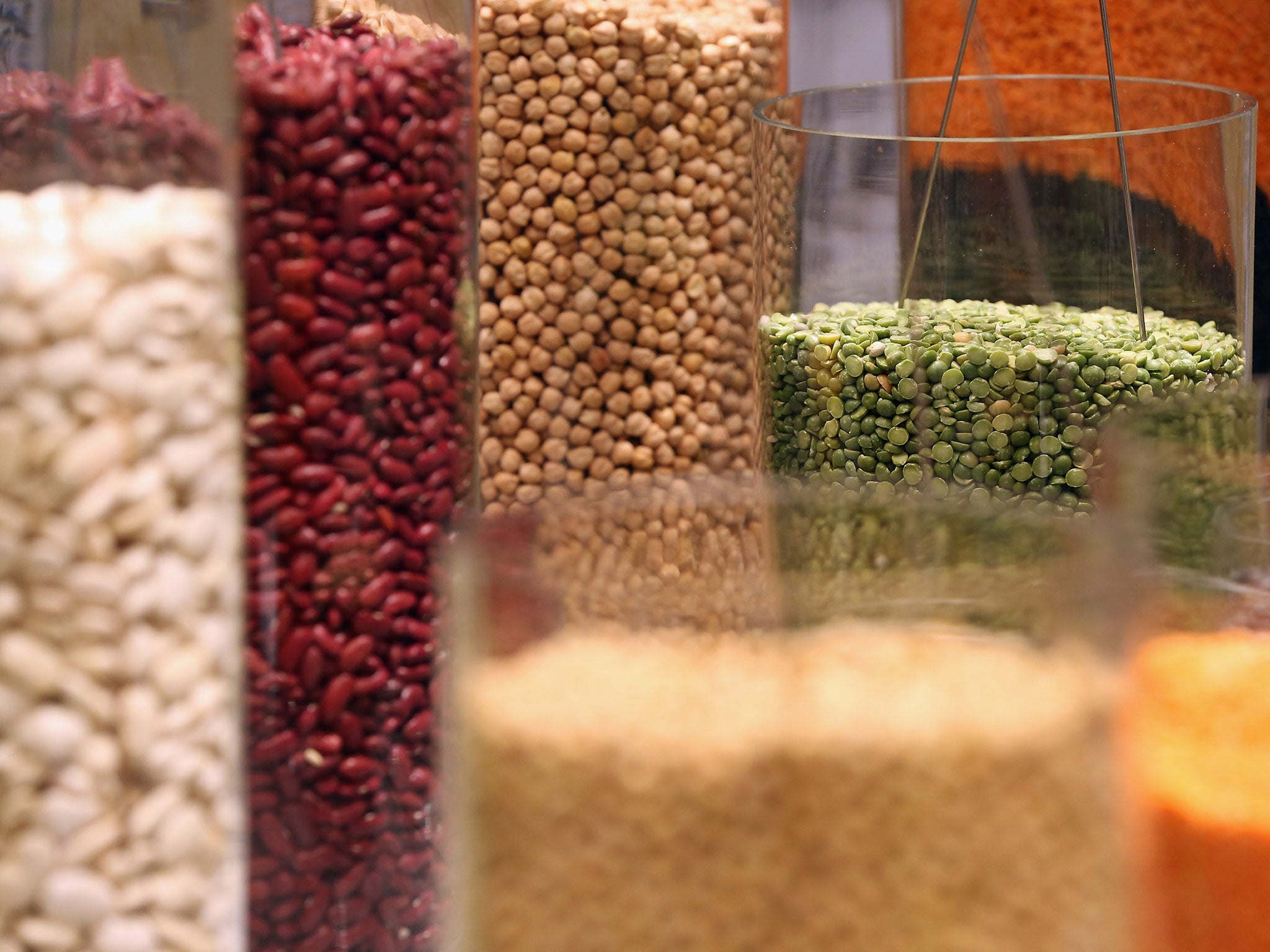There’s more to beanz than Heinz
Think beyond the can and try your hand at cassoulets and Boston baked beans, says Christopher Hirst

Why don’t the British like white beans – with one notorious exception? Of course, we lap up baked beans (which are actually stewed). According to Heinz, 2.3 million of us eat its “beanz” every day. But there is no insatiable appetite for recipes incorporating dried white beans. At our local Sainsbury’s, where baked beans occupy a vast acreage of shelf space, there is just one type of dried white bean, the cannellini, on sale.
Bean dishes have sustained Americans since colonial times, while the French relish the mighty cassoulet. Channel Islanders enjoy the Jersey bean crock and Guernsey bean jar, but mainland Britain has no tradition of bean dishes unless they are tinned and drowned in over-sweetened tomato sauce.
This omission is unfortunate. The cheap, sustaining and healthy bean – there are sound nutritional reasons for the expression “full of beans” – is ideal fare for the demanding days of winter.
I began my exploration with the American classic Boston baked beans. Like potatoes, tomatoes and peppers, the haricot bean is American in origin. The Oxford Encyclopedia of Food and Drink in America explains the origin of this dish: “Natives taught settlers how to cook beans with maple sugar and bear fat in a pit filled with hot stones or ashes.” With pig fat and molasses replacing the original ingredients, it was so relished as a Sunday treat in Massachusetts that Boston became known as Beantown.
Why molasses? This residue from the refining of sugar cane juice – what distillers call “the bottom of the barrel” – was plentiful in Boston due to the colonials’ love affair with rum. In 1763, New England had 159 distilleries, 30 in Boston alone. When all the sugar has been extracted, the dark remnant, which in its most extreme form is known as blackstrap, is tarry and burnt in flavour. Molasses is an acquired taste.
In The Essential New York Times Cookbook, a massive repository of culinary Americana, Amanda Hesser describes a 1937 recipe for Boston baked beans as “pretty great because it’s so different from baked beans as we know them. The texture is creamy, like refried beans, and the sauce isn’t nearly as sweet and syrupy.” (She doesn’t mean what we know as Heinz Beans, which are unknown in America aside from imports from England.)
I used cannellini beans. After overnight soaking and a good simmer until soft (around one hour and 40 minutes), I baked the beans with 300g of belly pork (substituting for salt pork) sliced into quarter-inch strips, two teaspoons of ready-made Colman’s mustard, one teaspoon of salt, a cup of boiling water and three tablespoons of molasses. No sugar, no tomatoes. After seeking advice on the matter, I found that slow baking (along with plenty of chewing) is an effective way of avoiding what the Americans delicately term “gas”. I cooked the beans overnight in a casserole at 100C.
The beans had the desired creamy texture but the flavour was curious. My wife’s reaction was more forthright. “They taste horrible. Too tarry. It’s like something you pour on the road.” After a few mouthfuls, I came to the same view. The bitter aftertaste was unpleasant, like chewing an aspirin. A recipe from Jane Grigson that included brown sugar and cloves along with molasses also headed towards the medicinal.
It turned out that others feel the same about Boston baked beans. Leading food PR Carolyn Cavele, who once lived in Beantown, has unhappy memories of the local legume: “I ate them out of politeness but I didn’t find them at all pleasant.” Food writer Charles Campion and chef Jeremy Lee vigorously supported her view (“Revolting!”; “Ugh!”) and urged the substitution of molasses with, respectively, maple syrup and pomegranate molasses.
It seems that the Native Americans were right in the first place. You need some sweetness with beans. For a third attempt, I tried a recipe incorporating sugar, honey and paprika along with pinto beans (somewhat larger than cannelloni) from Waitrose and Sainsbury’s Basics Cooking Bacon (odds and ends that you can rifle through for thick pieces). The result tempted the eye with dark red, glistening beans and thick chunks of bacon. Rich and deeply satisfying with a prickle of heat, it was a triumphant example of what an Italian chef friend calls “comfy food”.
Bean food reaches a mighty peak with cassoulet from south-western France. “A dish worthy of Gargantua’s monstrous appetite,” writes Caroline Conran in her excellent cookbook Sud de France, though she notes that it does not have to be quite so grand as some recipes maintain. For a feast-day cassoulet, it should be two-thirds meat to one-third beans with carrot and onion, but the proportions can be reversed for a dish that is “cheap, comforting and rustic”.
Larger haricots are best for cassoulet (look out for lingots de Soissons if you’re in the dish’s homeland). The meat should include belly pork, a lump of pancetta (or good streaky bacon) and Toulouse sausage. Somewhat harder to find is confit of duck, though you can buy it (at a price) from Amazon, or mail order butcher Donald Russell. One ingredient readily available is goose fat, used for browning the meat and vegetables. Best made over several days, cassoulet is the perfect winter warmer, though I once saw sweaty tourists in Carcassonne tucking in on a boiling summer day. Commercial versions, particularly La Belle Chaurienne, can be excellent. Now that’s the kind of tinned beans I wouldn’t mind eating on a regular basis.
Join our commenting forum
Join thought-provoking conversations, follow other Independent readers and see their replies
Comments